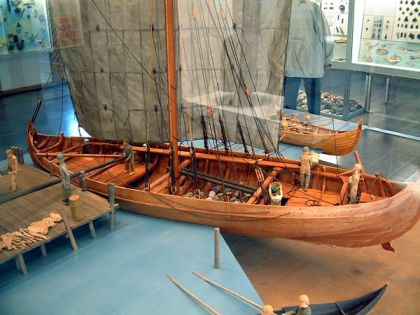The Viking ships were used both before and during, as well as after the time known as the Viking Age (7th – 11th century). These ships were known for their speed, versatility, and ability to navigate both open seas and shallow rivers.
It is fair to say that the history of Northern and Western Europe would have looked very different if the Vikings never took to their ships. Driving both their western expansion into Britain, Iceland and beyond as well as their Eastern expansion into the rivers of Eastern Europe, the Vikings depended on their ships.
The Vikings were maritime people who relied on their ships for trade, commerce and warfare as well as exploration. The Viking Age saw the expansion of the Vikings to different parts of Europe, Greenland, and North America. The ships were a critical aspect of the Viking’s success and played a significant role in their expansion and impact on history.
The Viking ships are important as they reflect the ingenuity and technical prowess of the Vikings. These ships allowed them to expand their influence and reach new lands for both raiding and trade as well as conquest and settlements.
Types of Viking ships
Longship
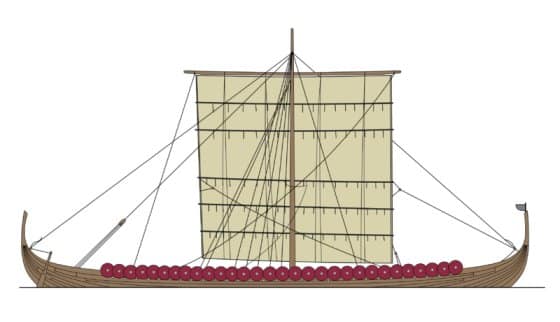
A longship is a type of seafaring vessel that was widely used by the Vikings from the 8th to the 11th centuries. The typical longship was characterized by its sleek and narrow design, which allowed for quick and efficient navigation in both calm and rough seas. It was also equipped with a shallow draft, making it ideal for navigating shallow rivers and fjords. Another notable feature of the longship was its high, pointed bow and stern, which made it easily recognizable on the water.
Role in Viking raids and explorations
The longship was an essential component of the Vikings’ raids and explorations. Its speed and maneuverability made it ideal for surprise attacks on coastal towns and settlements. The longship’s shallow draft also allowed the Vikings to navigate up rivers and into bays, making it possible for them to reach places that other seafaring vessels couldn’t. With the ability to carry a large crew, the longship was able to support extended voyages, enabling the Vikings to both go to war as well as expand their territories.
Knarr
The knarr was another type of Viking seafaring vessel that was used primarily for trade and transportation. Unlike the longship, the knarr was wider and had a deeper draft, making it more suited for carrying goods and supplies. It was also equipped with a broader, flat bottom, which allowed for a larger cargo hold. The knarr was typically propelled by a single square sail and was equipped with oars for additional propulsion.
Role in Trade and Transportation
The knarr was the main vessel used by the Vikings for trade and transportation. Its larger size and greater cargo capacity allowed the Vikings to transport goods and supplies to far-off markets and trade centers. The knarr was also used to transport settlers to new lands and was instrumental in establishing the Vikings’ overseas settlements.
Comparison to Longships
While the knarr and longship served similar functions, they were designed for different purposes. The longship was designed for speed and maneuverability, making it ideal for raids and explorations, while the knarr was designed for carrying goods and supplies, making it ideal for trade and transportation. The knarr was also slower and less maneuverable than the longship, which made it less suited for military operations.
Karve
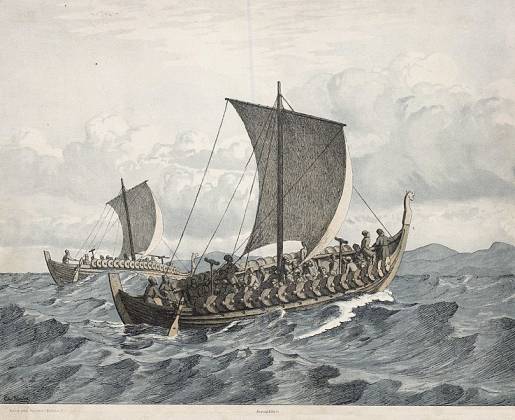
The karve was a smaller type of Viking seafaring vessel that was used primarily for coastal transportation and fishing. It was characterized by its narrow and pointed design, which made it ideal for navigating shallow waters. The karve was typically propelled by oars, although it could also be fitted with a sail for additional propulsion.
Coastal Transportation and Fishing
The karve was the primary vessel used by the Vikings for coastal transportation and fishing. Its shallow draft made it ideal for navigating the shallow waters along the coast, while its narrow design allowed it to navigate in narrow inlets and bays. The karve was also equipped with fishing gear, making it possible for the Vikings to fish in these waters and bring their catch back to shore.
Examples from Archaeological Findings
Archaeological findings have revealed the widespread use of the karve in Viking coastal communities. Several excavations of Viking settlements have uncovered the remains of many karves, along with fishing gear and other tools used for coastal transportation and fishing. These findings provide valuable insights into the daily life and activities of the Vikings, who relied on the karve for their livelihood.
Skeid
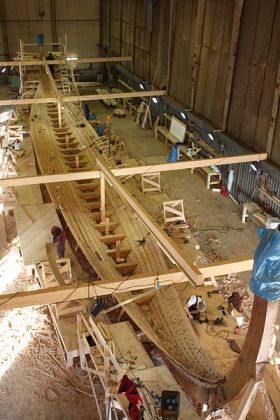
The skeid was a type of Viking seafaring vessel that was used primarily for battle and warfare. It was larger and more heavily armed than the other Viking ships, with a high, pointed bow and stern. The skeid was equipped with oars and a sail, but it was primarily powered by rowers, which made it ideal for charging into battle. It was typically manned by a large crew, who were armed with weapons and prepared for battle.
Role in Battle and Warfare
The skeid was the primary vessel used by the Vikings for battle and warfare. Its large size and powerful design made it ideal for launching surprise attacks on coastal towns and settlements. The skeid’s shallow draft also allowed it to navigate shallow waters, making it possible for the Vikings to reach coastal targets that were otherwise inaccessible. The skeid was also equipped with a large crew, which made it possible for the Vikings to launch massive coordinated attacks and engage in hand-to-hand combat.
Design and construction
The design of Viking ships was based on the need for versatility and mobility. These ships were long and narrow with a shallow draft. This allowed them to both navigate through shallow waters and make quick turns in battle. They were clinker-built, meaning that overlapping planks were attached to a wooden framework to form the hull. The high, pointed prow and stern were designed to cut through rough waters as well as provide stability in rough seas. Sails and oars were the primary modes of propulsion, allowing for speed as well as great maneuverability.
Variations in design
Viking ships were designed for different purposes, such as cargo transport and warfare. The Knarr was a larger ship used for cargo transport, with a wider and deeper hull for carrying goods. The Longship, on the other hand, was used for warfare and exploration. Its narrow and sleek design allowed it to move quickly and make sharp turns, making it ideal for attacking other ships and exploring new lands.
Construction of Viking Ships
The materials used in the construction of Viking ships were mainly sourced from the surrounding forests. Wood from oak or pine trees was used for the hull and deck, while iron or bronze nails were used for fastening. Rope or animal hides were used for rigging, adding strength and stability to the ship.
Building process
The building process of a Viking ship was a complex and skilled task that required extensive knowledge and experience. First they would be shaping the hull, which was done by constructing a wooden framework and attaching overlapping planks to it. The keel and ribs were then assembled, providing the backbone of the ship. After that the sides were planked, adding strength and stability to the hull. Finally, the deck was added, providing a platform for crew members and cargo.
Techniques used
Two main techniques were used in the construction of Viking ships, the Clinker method and the addition of carving and decorative elements. The Clinker method involved attaching overlapping planks to the wooden framework, creating a strong and flexible hull. Decorative elements, such as intricate carvings, were added to the prow and stern, giving the ships a unique and recognizable appearance. These elements not only served a decorative purpose but also helped to identify the ship and its crew.
Use and functionality
The various ship designs have, as I laid out already, specialized use cases that they were most suited for.
Trade and commerce
The knarrs were used for trade and commerce, and they played a critical role in the Viking economy. The Vikings traded with many different cultures and regions, exchanging goods such as textiles, spices, and precious metals.
Warfare and raids
The longships were used for warfare and raids, and they were a key factor in the success of the Vikings. The ships were fast, versatile, and well-equipped for battle as well as able to navigate shallow waters gave them an advantage in coastal raids.
Exploration and colonization
The Vikings used their ships to explore and colonize new lands, including Greenland and parts of North America. The ships allowed the Vikings to travel far and wide, establishing settlements and colonies in new lands. The ships also facilitated contact between the Vikings and other cultures, leading to cultural exchange and influence.
Famous Viking Ship Finds
Oseberg Ship (burial ship)
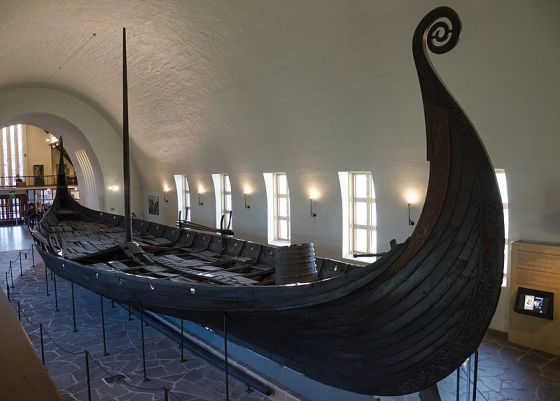
The Oseberg ship was discovered in a large burial mound in Norway in the early 20th century. It is believed to have been built in the 9th century and was in normal use for many years before being used as a burial ship for a wealthy Viking woman.
Unique features of the ship and its significance
The Oseberg ship is widely considered to be one of the most well-preserved Viking ships ever discovered. It is also notable for its intricate carvings and decorations, which provide valuable insight into Viking art and culture. It is also one of the earliest known examples of a Viking ship and has greatly contributed to our understanding of Viking shipbuilding technology.
Contribution to our understanding of Viking shipbuilding technology
The Oseberg ship has provided important insights into the construction and design of Viking ships. For example, it has allowed researchers to study the ship’s keel, which was the backbone of the ship, as well as the shape and size of its hull and sails. This has helped to shed light on the nautical skills and technological advancements of the Vikings during this time period.
Gokstad Ship (burial ship)
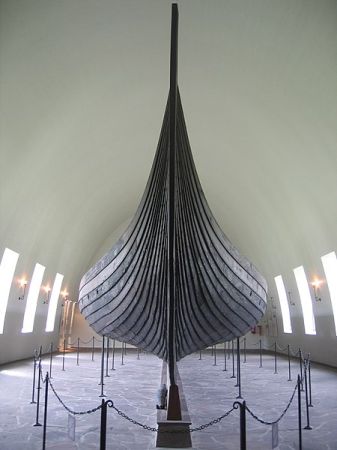
The Gokstad ship was discovered in Norway in 1880 and is believed to have been built in the 9th century. Like the Oseberg ship, it was used as a burial ship for a wealthy Viking.
Unique features of the ship and its significance
The Gokstad ship is considered one of the most well-preserved Viking ships and is notable for its large size and seaworthiness. It was built with a shallow draft, which made it ideal for navigating shallow waters and rivers. It was also designed with a curved bow and stern, which made it faster and more maneuverable than other Viking ships.
Comparison to other Viking ships and its role in Viking society
The Gokstad ship was one of the largest and most advanced Viking ships of its time and was likely used for long-distance voyages and raids. It was also likely used as a symbol of wealth and power by its owner and was likely highly valued by the Viking community.
Tune Ship (burial ship)
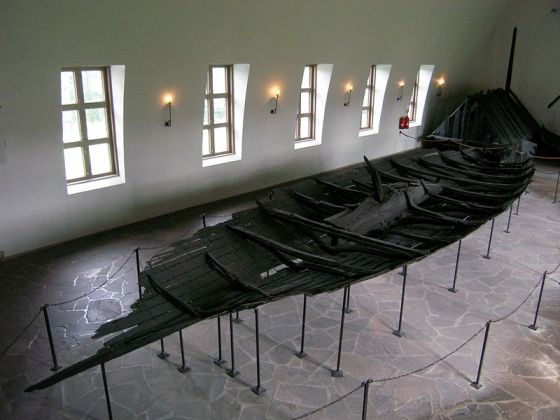
The Tune ship was discovered in a burial mound in Norway in the late 19th century and is believed to have been built in the 9th century. Like the Oseberg and Gokstad ships, it was used as a burial ship for a wealthy Viking.
Unique features of the ship and its significance
The Tune ship is notable for its well-preserved state. It is also one of the earliest examples of a Viking ship with a completely intact keel. As one of the smallest Viking ships discovered, it suggests it was likely used for shorter voyages and local transport.
Comparison to other Viking ships and its role in Viking society
The Tune ship provides important insights into the diversity of Viking ship types and their varying uses. Its small size and simple construction suggest that it was likely used by a less wealthy individual. Most likely for more practical purposes, such as transportation or fishing. This contrasts with the larger and more elaborate Gokstad and Oseberg ships. They were likely used by wealthy Vikings for long-distance voyages and as symbols of wealth and power before becoming burial ships.
Roskilde 6 Ship (one of six ships sunken in Denmark)
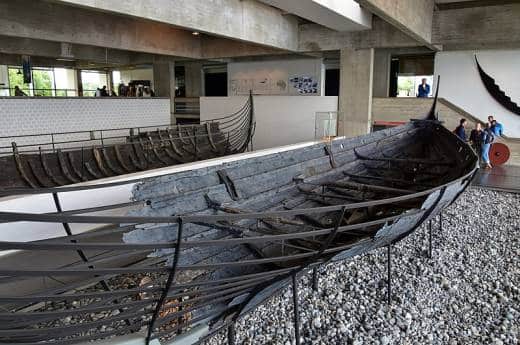
The Roskilde 6 ship was discovered in the Danish city of Roskilde in the late 20th century. It is believed to have been built in the 11th century. It is one of six Viking ships discovered in Roskilde and is the largest of the group.
Unique features of the ship and its significance
The Roskilde 6 ship is notable for its large size and well-preserved state. It was built with a deep draft, which made it ideal for open-water voyages. Most likely it was used for trade and long-distance voyages. It also features a unique construction technique in which the planks of the ship were connected by iron nails. This would have made the ship stronger and more durable.
Significance as one of the largest Viking ships ever discovered
The Roskilde 6 ship is the largest Viking ship ever discovered. It has provided us with important insights into Viking shipbuilding technology and seafaring abilities. It also highlights the importance of trade and long-distance voyages to the Vikings.
Use of ships in burials
The Vikings used ships as funeral vehicles, and many well-preserved ships have been found in burial mounds. The ships were believed to transport the deceased to the afterlife. As preparation for that journey the ships were often buried carrying all sorts of valuable good the deceased might need in later “life”.
Using ships in burials was a symbol of status and power of the deceased. The size and quality of the ship often reflected the status of the deceased. The burials also reflect the importance of ships in Viking society and the cultural belief in the afterlife.
From excavations made, the burial ships have provided valuable insights into Viking beliefs, culture, and society. The discovery of well-preserved ships has allowed us to better understand the role of ships in Viking society. They also give us a better understanding of the significance of ships in Viking beliefs and practices.
Ahman ibn Fadlan, a 10th century Arab traveler, wrote about his encounter with a Kievan Rus Viking chief’s burial in his work “Risala”. According to his account, the Viking chief was buried in a ship, which was filled with riches and goods. The ship was set on fire and sent out to sea, accompanied by mourners who followed the ship until it burned to ashes. The mourners then performed a series of rituals, including sacrifice and feasting, to send the deceased to the afterlife. This account provides valuable insights into Viking funerary practices, including the significance of ships in the burial process and the beliefs surrounding death and the afterlife in Viking society.
Key Take Away Points
Viking ships were an essential aspect of the Vikings’ success and expansion.
These ships were known for their speed, versatility, and ability to navigate both open seas and shallow rivers.
The different types of Viking ships served specific purposes, and the Vikings were constantly improving their shipbuilding techniques.
The use of ships in trade, commerce, warfare, and exploration was critical to the Vikings. That they also used them in burials was a symbol of status and power in Viking culture.
Viking ships continue to be an important part of the Scandinavian cultural heritage . To this day they stand as a symbol of the ingenuity as well as technical prowess of the Vikings.
Featured Image Credit: BTBScanpix, CC BY-SA 4.0, via Wikimedia Commons

